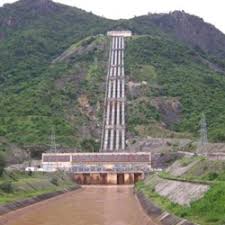Bhawanipatna: The Indravati reservoir which irrigates farmlands and generates power in Kalahandi district is dying a slow death due to heavy siltation.
The situation is turning worse by the day. This is due to the fact that a large quantity of mud enters the reservoir with water and gets deposited in front of the intake well year after year.
The Indravati reservoir became operational in 1999, and it is feared that 60,000 cubic metres of mud might have got deposited near the intake well over the last 20 years.
The reservoir irrigates 1.26 lakh hectares of farmland. It is also a revenue source for the government.
The government earned Rs 125 crore from 1,522 million units (MU) of power in 2016-17, Rs 308 crore from 3,884 MU in 2016-17 and Rs 308 crore from 3,884 MU in 2017-18 financial years.
A senior engineer quoting a report by the Central Water Power Research Institute, Pune, said if the situation continues the day is not far when the reservoir will get filled up due to heavy siltation.
Siltation has led to a decrease in the water level in the reservoir. The decrease in water level has made it difficult to achieve the head storage level capacity of 625 metres which is required for providing irrigation to farmlands and for power production, senior officials said.
Currently, the water level at Indravati is 628.87 metres while power production is 100 MW. Officials fear that if the water level goes below 628 metres and power production continues then it might seriously affect the functioning of the turbine as it happened June 12, 2008.
Sources said siltation started from the beginning in 1999 following the loss of green cover due to shifting cultivation and soil erosion in the 2,630 sq.km catchment area of the dam. The soil and muck flows into the reservoir and gets deposited inside.
Fearing siltation the authorities constructed a silt check dam at a cost of Rs 3 crore at Kokeipadar, about 2 km from Mahulpatna in the district.
The authorities declared the check dam completed June 30, 2002, but unfortunately 8,000 cubic metres of stone packing of the check dam got displaced June 9, 2003.
The authorities came to know about this July 15, 2003, but never took any steps for repairing it. Later, the dam completely collapsed, but the authorities covered up the issue instead of taking action.
The check dam had created hopes among the villagers of Adri, Gopinathpur and Maligaon of getting connected with the outside world, but their dreams were shattered after the dam collapsed.
It is feared that every year around 3,000 cubic metres of mud and soil gets deposited near the intake well of the reservoir. This is happening due to soil erosion caused by shifting cultivation.
If the claims are true then over 60,000 cubic metres of soil and muck might have got deposited by now in the reservoir in the last 20 years.
The report by the Central Water Power Research Institute confirms the fear that is looming large over the reservoir. The authorities are ignoring some of the faults pointed out by the Dam Safety Review Panel.
There are fears that if the authorities continue with power generation without removing the muck deposited near the intake well, then there is a possibility of a recurrence of the 2008 incident. Observers have demanded that the government should take steps for de-silting the reservoir.
